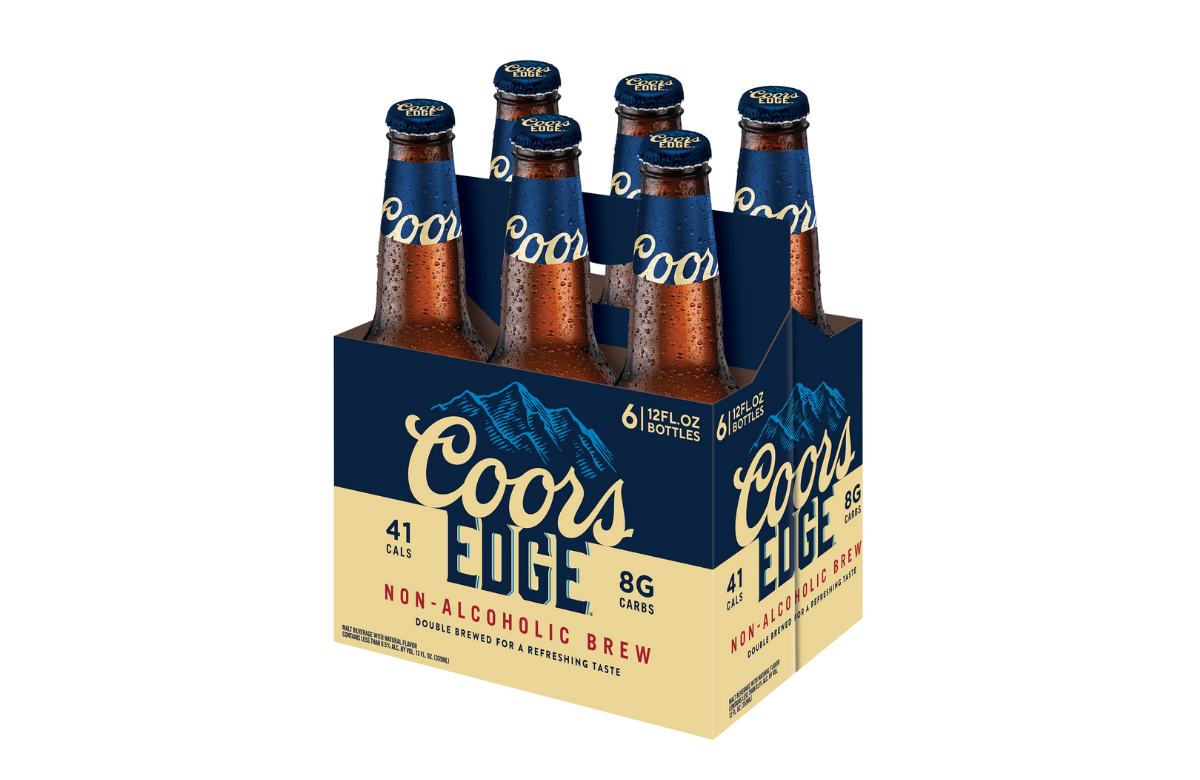MillerCoors in November plans to release Coors Edge, a new non-alcohol beer with the lowest calories and carbohydrates in its class, as part of an effort to reach drinkers migrating toward more low- and no-alcohol offerings.
With the launch of the Coors Edge, which contains 41 calories, 8 grams of carbohydrates and less than 0.5% alcohol-by-volume, the brewer is taking another step in modernizing its portfolio of lower-octane beverages.
“The low- and non-alcohol trend is not going away, and we know we need to deliver more options for consumers who are in drinking occasions and do not want to consume alcohol,” says Matt Ferebee, associate marketing manager on the innovations team at MillerCoors. “This is one step of many we’re taking to address these macro trends in the industry.”
The unveiling of Coors Edge comes in the same week MillerCoors relaunched 2.8%-ABV Miller64 as an “extra light beer” with a new look designed to appeal to health-conscious drinkers seeking lower-calorie options. And last summer MillerCoors parent Molson Coors acquired Clearly Kombucha, which makes six flavors of non-alcohol fermented tea beverages, and folded it into its U.S. craft and imports arm, Tenth and Blake.
Coors Edge, which comes packaged in bottles and cans that recall Coors Banquet’s packaging, is a blend of two recipes that produce a beer with similar flavor notes as Banquet, Ferebee says. “The goal was to make a good-tasting non-alc that tastes like a beer. This is all about bringing our non-alcohol Coors-branded beer more in line with the heritage and refreshment cues you’d expect from Coors.”
The brand, first released in Canada last year, will replace Coors Non-Alcoholic and join Sharp’s in the MillerCoors non-alcohol beer portfolio. It is slated to hit shelves in November.
It comes to market as demand for and sales of non-alcohol beer are booming. Sales of non-alcohol beer are up 8% in volume and 18.6% in sales dollars year-to-date through Aug. 24, according to Nielsen all-outlet and convenience data. That compares with +0.7% and +4.1% growth in regular beer, data show.
While the U.S. market for non-alcohol beer is just starting to show signs of life, the trend has been underway in Europe and Canada for the better part of a decade. Heineken, Anheuser-Busch InBev, Diageo and Molson Coors are bringing to market more low- and no-alcohol products globally.
AB-InBev has said its low or no-alcohol drinks (mostly energy drinks and non-alcohol beers) will make up 20% of production volume by 2025, up from around 10% today. It recently launched Budweiser 0.0 in India.
Diageo’s Guinness last year introduced a new non-alcohol lager called Pure Brew in Ireland.
And Heineken early this year released its new non-alc entry, Heineken 0.0, in the U.S. and backed it with a hefty advertising budget. The beer, now sold in about 30 global markets, helped grow the company’s non-alcohol beer business by nearly 10% globally in its most recent quarter.
And MillerCoors parent Molson Coors last year debuted Coors Edge in Canada and has a goal to offer quality no-alcohol and low-alcohol choices (3.5% or below ABV) in all of the markets in which the company sells beer by 2025.
“Consumers are drinking less. They’re exploring other options to alcohol. There’s this whole sober-curious movement, 'dry January' and now 'sober September,'” Ferebee says. “Having a solid non-alcohol beer portfolio is certainly a focus for MillerCoors, and with Coors Edge we saw an opportunity to up our game in a space that we expect to continue to grow.”

